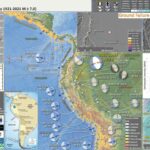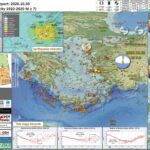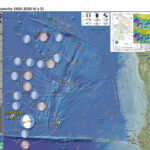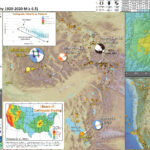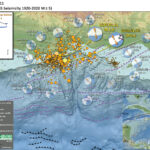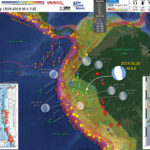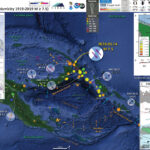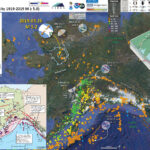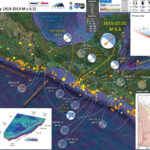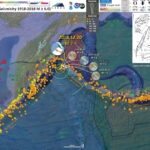In the middle of the night (my time) I got a notification from the EMSC earthquake notification service. I encourage everyone to download and use this app. There was an intermediate depth magnitude M 7.5 earthquake in Peru. The tectonics…
Earthquake Report: Turkey!
I awakened to be late to attending the GSA meeting today. I had not checked the time. 7am is too early, but i understand the time differences… As i was logging into Zoom, my coworker emailed our Tsunami Unit group…
Earthquake Report: Gorda Rise
It was a busy week (usual, right?). The previous week I was working on getting a house remodel done so someone could move in (they have been sleeping on couches for 6 months, so want to get them in asap).…
Earthquake Report: Idaho!
Well Well Well Yesterday there was a very interesting magnitude M 6.5 earthquake that ruptured in central Idaho, near the Sawtooth fault. https://earthquake.usgs.gov/earthquakes/eventpage/us70008jr5/executive Idaho lies in the intersection of several different physiographic provinces. Physiographic provinces are areas of Earth that…
Earthquake Report: Puerto Rico!
Welcome to the next decade of the 21st century. We may look back a decade to review the second most deadly earthquake in the 21st century, from the magnitude M 7.0 Haiti Earthquake on 12 Jan 2010. I put together…
Earthquake Report: Peru
Just a moment ago, there was an intermediate depth Great Earthquake (magnitude M≥8.0) beneath Peru. I was heading to bed at about 1:10 local time (Sacramento, CA) when I noticed a tweet from Dr. Anthony Lomax (presenting his first motion…
Earthquake Report: New Ireland
This region of Earth is one of the most seismically active in the past decade plus. This morning, as I was preparing for work, I got an email notifying me of an earthquake with a magnitude M = 7.5 located…
Earthquake Report: Northern Alaska
At shortly before 13:30 today in northern Alaska there was a large earthquake, with a magnitude of M=5.1 (now M 5.0). https://earthquake.usgs.gov/earthquakes/eventpage/ak0193wxcfea/executive Many of us are familiar with the Good Friday earthquake, a megathrust subduction zone earthquake. This earthquake has…
Earthquake Report: Guatemala and Mexico
This morning (my time) there was a moderately deep earthquake along the coast of southern Mexico and northern Guatemala. Here is my Temblor article about this M=6.6 earthquake and how it might relate to the 2017 M=8.2 quake. https://earthquake.usgs.gov/earthquakes/eventpage/us2000jbub/executive Offshore…
Earthquake Report: Bering Kresla / Pacific plate
We just had a large earthquake in the region of the Bering Kresla fracture zone, a strike-slip fault system that coincides with the westernmost portion of the Aleutian trench (which is a subduction zone further to the east). At first,…

